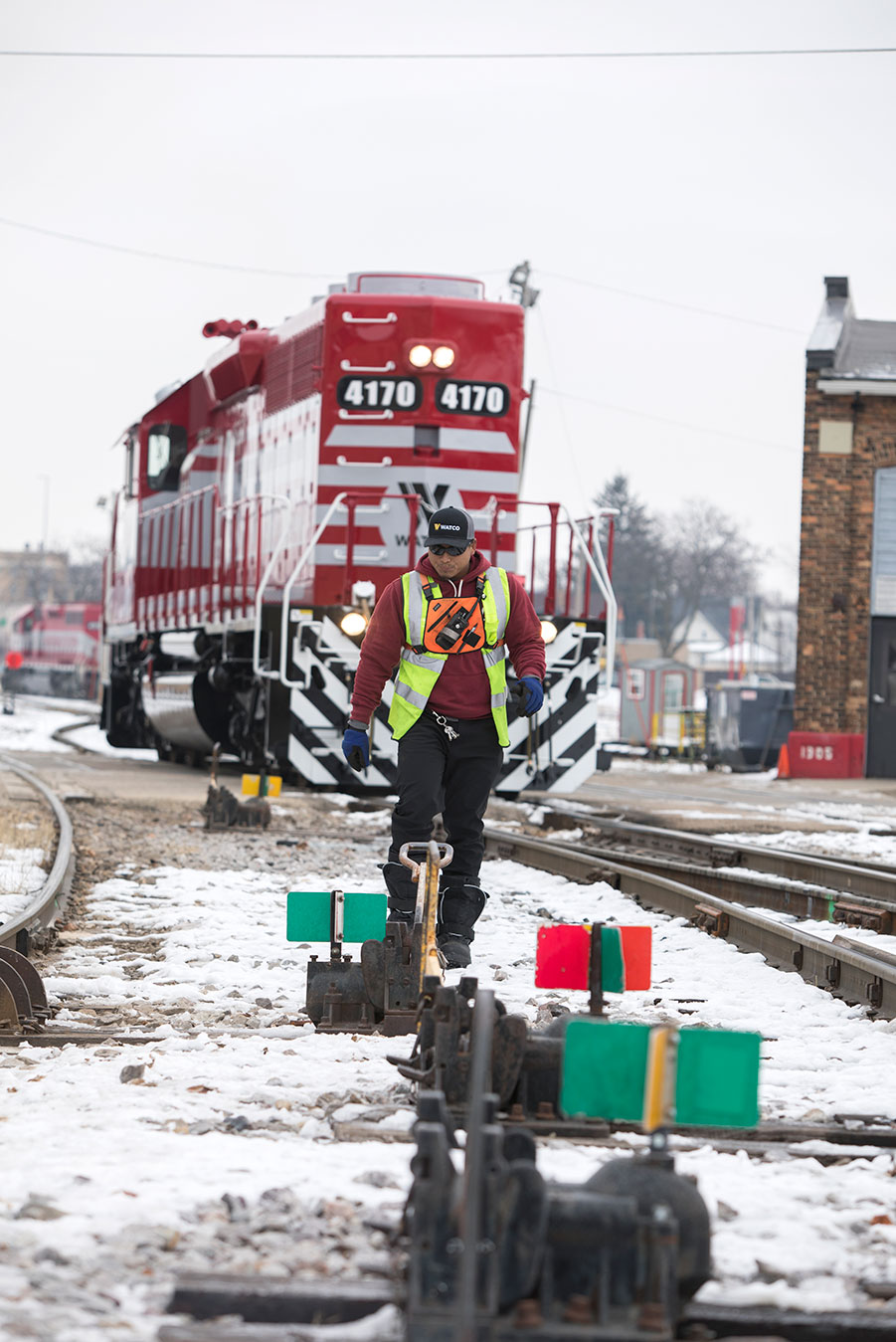Wisconsin & Southern: Safety depends on more than just injury-free streaks
5/13/2021
By Jeff Stagl, Managing Editor
The Wisconsin & Southern Railroad (WSOR) recently ended a safety streak that reached a highly unusual level for a regional: nearly 1.2 million manhours without a reportable injury.
The streak started more than three years ago and was broken in March, when a locomotive mechanic developed shoulder pain after performing a minor task in a restroom. The incident led to a doctor’s visit, then some follow-up visits that shockingly — and sadly — revealed the worker had contracted pancreatic cancer.
The major injury-prevention effort certainly was a milestone for WSOR, a nearly 600-mile regional owned by Watco that operates mostly in central and southern Wisconsin, reaches Chicago and employs 158 people. But the achievement was more of an acknowledgment of the safety improvements instituted at the railroad over the past decade, WSOR leaders believe.
Through an intense organization-wide commitment and tight collaboration, the railroad has developed a safety culture and mindset that didn’t exist when Watco purchased the regional in 2012, says WSOR General Manager Preston Nelson.
“You can’t have success without a safety culture,” he says. “We’re showing success now because of our people, attitude and processes.”
The railroad’s safety-first attitude — which has been adopted by the leadership team on down — reflects efforts to hire the right people and share the same values. Employees now extol higher professionalism and pride, says Nelson, who recently was named one of Progressive Railroading’s Rising Stars of 2021 as someone under the age of 40 who’s positively impacted their organization.
Workers are encouraged to approach a supervisor or manager and share what they witness on the job or discuss any concerns without repercussions. Employees can stop a task or work process if an action appears unsafe.
“We want to get to the root cause of something so it doesn't happen again,” says Nelson.
WSOR also maintains a team safety and improvement committee that’s charged with responding to recommendations and suggestions, and boosting morale. In addition, managers and supervisors strive to ensure each worker has the proper equipment and protection to help prevent an injury.
In terms of a major contributor to improved safety, training bubbles to the top. The regional has overhauled and enhanced training, including the formation of a training plan for all crafts.
When Nelson joined the WSOR in 2015 as superintendent of operations (he became the GM three-and-a-half years ago), the regional didn’t have such a plan. Now, specific duties and involvement procedures are set to maximize training time. The plan requires that new hires only work during daylight hours the first two weeks on the job so visibility is optimal.
“Training has come a long way and is much more hands-on,” says Nelson. “We continue to work on it, and it keeps evolving.”
 WSOR workers are encouraged to approach a supervisor or manager and share what they witness on the job or discuss any concerns without repercussions. Employees can stop a task or work process if an action appears unsafe.Credit: Watco
WSOR workers are encouraged to approach a supervisor or manager and share what they witness on the job or discuss any concerns without repercussions. Employees can stop a task or work process if an action appears unsafe.Credit: WatcoBefore a recruit attends any classes to begin learning about a new job, they spend three weeks in cross-craft training. For example, a new-hire conductor without any prior experience will spend time with mechanics, rail-car repairers, maintenance-of-way team members and other current workers to learn about railroading aspects.
“They establish relationships with the workers, but also learn what a frog is or what a tie plate is because they see a tie installed,” says Nelson.
Recruits are given a checklist of things to ask during ride-alongs.
“Then they’re not just looking out a vehicle’s windows all day,” says Nelson.
When it’s time to attend class, new hires with this level of training have proven to be a better student, he adds.
After they finish classes, recruits receive hands-on field training for a week with a peer trainer and other contributors. They continue to discuss and review all training, while being afforded opportunities to gain more confidence in performing tasks in the field, such as throwing a switch.
“All of this training has shown a positive snowball effect,” says Nelson.
Since the WSOR’s employees are more experienced, team-oriented and process-trained than they were a number of years ago, another impressive safety streak might be around the corner.
“There are no excuses why we can’t do it again,” says Nelson. “We have learned a lot.”


